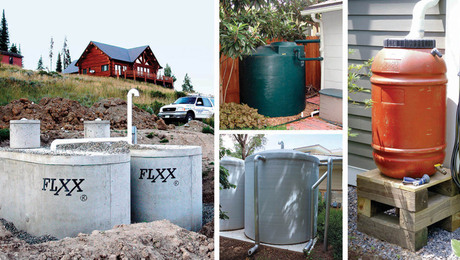Is Your Heating System an Energy Beast?
Here’s how to spot the signs and boost the efficiency of your furnace, boiler, or heat pump.

Synopsis: Is your heating system efficient? Is it time to update your furnace? How much should you pay to get your furnace serviced? At a time when heating (and cooling) a house costs more than ever, these questions are a few among many that homeowners need to consider. Dave Yates, a mechanical contractor based in York, Pa., answers 10 of the most common questions that homeowners have about their heating systems, including furnaces, boilers, and heat pumps. The article includes sidebars on basics of each type of heating system and a glossary with definitions of common terminology in the heating-and-cooling industry.
The economy is down, fuel costs are up, and chances are that your heating budget is already busted. You need to do something — but what? Only a few of us are ready to invest in geothermal or solar. The rest of us need to find the answer in the heating system we already have.
For 70% of U.S. households, that system consists of a furnace that forces hot air through ducts; for 17%, it’s a heat pump; and for 11%, it’s a boiler that heats with water or steam radiators. The remaining 2% of homes use wood, coal, geothermal, solar, or other heating methods. When it comes to fuel, 58% of us use gas (either natural or propane), about 35% use electricity, and almost 7% use fuel oil.
Your home might not have the most efficient heating system available, but there’s good news: You can tune up your current system so that it performs better, keeps you more comfortable, and doesn’t put as big of a dent in your wallet. The following Q&A can help. Although the topics might seem simple, they’re useful in diagnosing deficiencies. In fact, I usually end up fielding a lot of these questions from homeowners based on their observations of how their heating system is or isn’t working. Once you know where your system is falling down, it’s possible to boost it (and its efficiency) back up.
Q. I hear a whistling noise around the blower compartment of my furnace. What is causing the noise? Should I be concerned?
A. You’re hearing air leakage. All air handlers (any device with a blower, including furnaces, heat pumps, and central air) have two ducts: one for supply, the other for return. I often find considerable air leakage at both connection points. If the blower is located in an unconditioned location (attic, crawlspace, or basement), it is bleeding out heat, or Btu, on the supply side while pulling in unconditioned air that must be warmed (or cooled and dehumidified) on the return side. This energy loss can add 10% or more to your heating and cooling bills.
You can fix these leaks by sealing the connection with sealant and/or top-grade mastic tape rated to withstand the area’s exposure. While you’re at it, check the air handler’s access door, another frequent source of air leaks. Because the access door must be opened to service the equipment, you want to use only tape or magnetic strips to seal gaps. Other spots to seal include filter slots and openings for wiring. Last but not least, the accessible ductwork should be examined for leaks. Seal them with high-quality tape, mastic, or sealant that’s compatible with the duct material and with exposure to surrounding air temperatures.
Furnace basics
Furnaces use natural gas, propane, oil, or electricity, and are fired when a remote thermostat detects that the temperature in a room has fallen below a preset level. Once in operation, the burner fires in a combustion chamber and warms a heat exchanger (electric furnaces have coils much like a toaster). A blower pushes air over the heat exchanger, or coils, and hot air flows through a series of ducts and enters a home’s living spaces through registers in the floors, walls, or ceiling. Ducts also supply return air to the furnace, and combustion gases exhaust through a chimney or direct-vent system.
For more photos, illustrations, and details, click the View PDF button below:

























